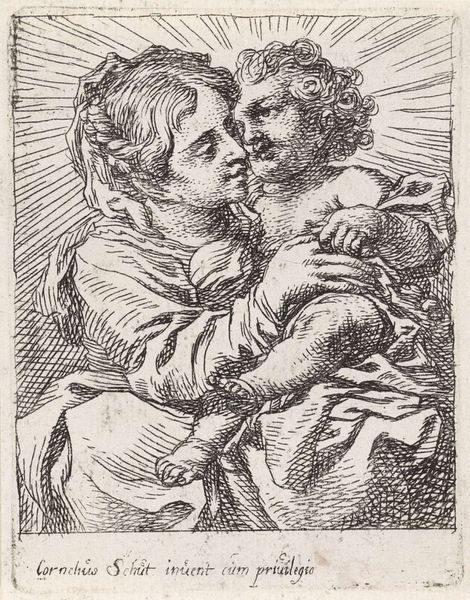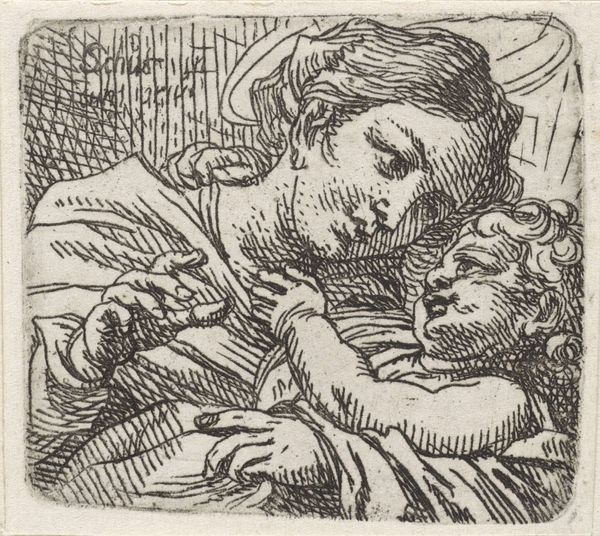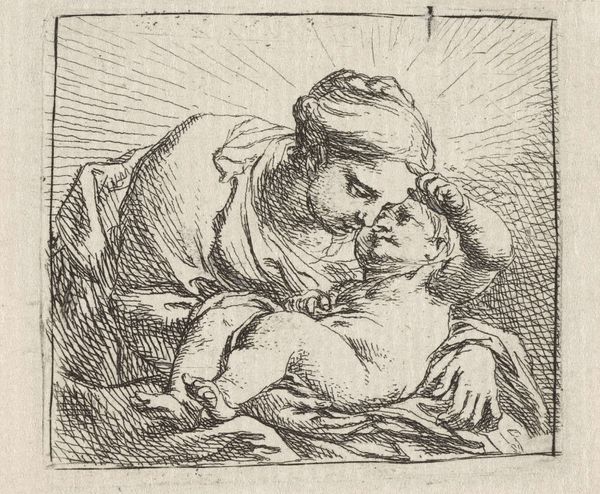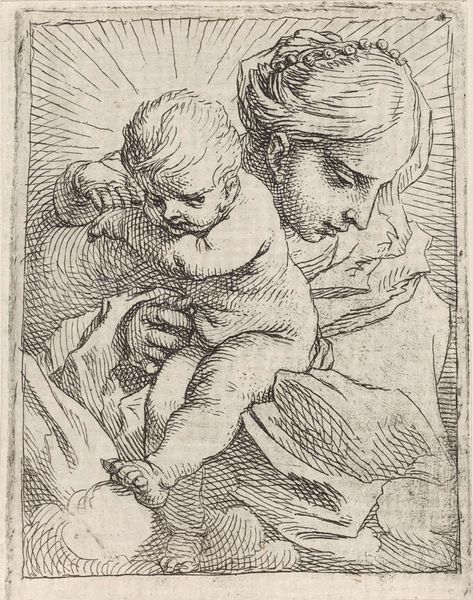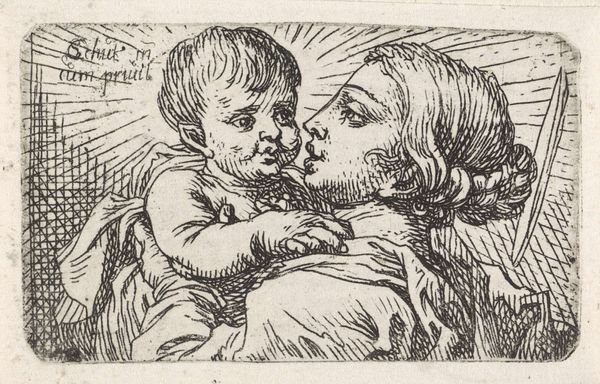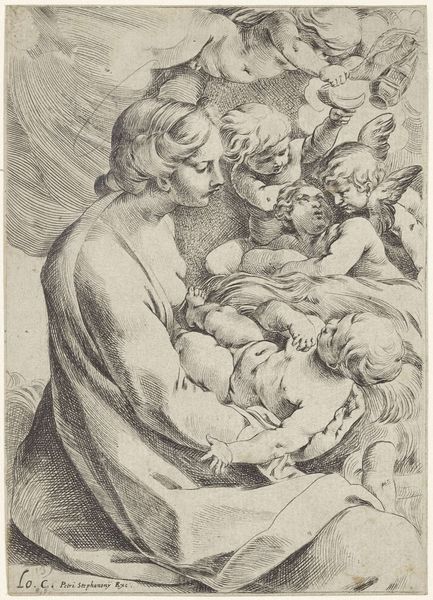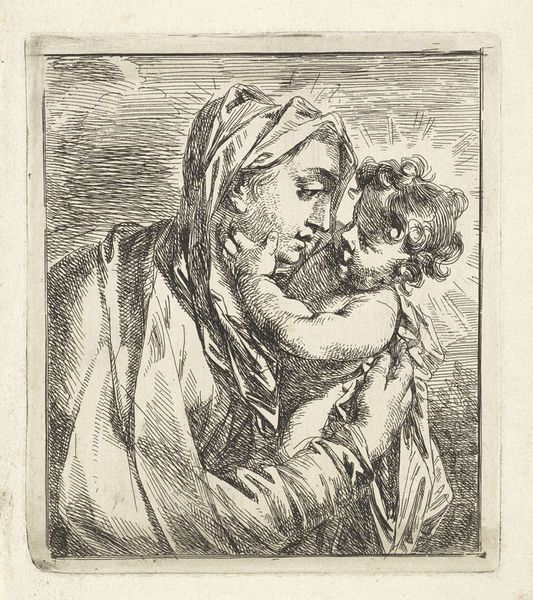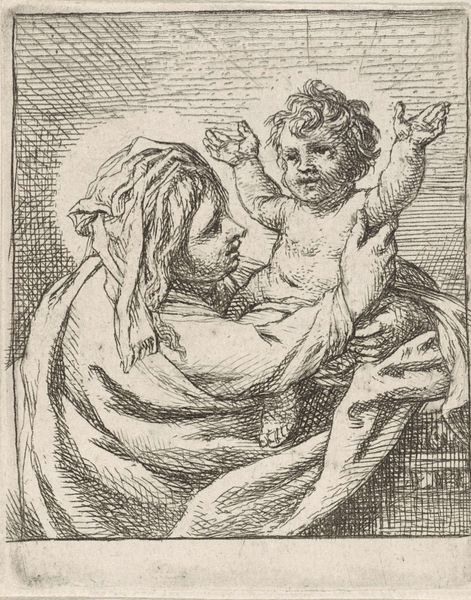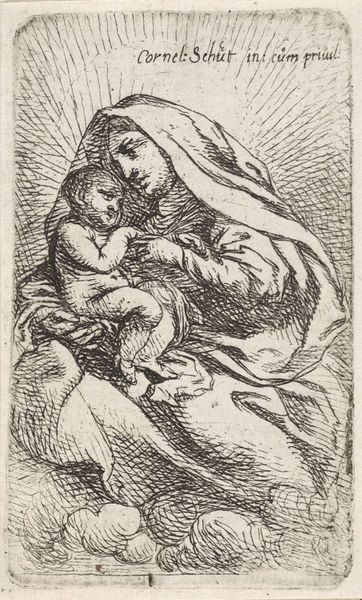
drawing, ink, pen
#
portrait
#
drawing
#
baroque
#
figuration
#
ink
#
pen
Dimensions: height 56 mm, width 56 mm
Copyright: Rijks Museum: Open Domain
Curator: I'm immediately struck by the tenderness radiating from this image, despite the stark ink lines. The composition, even in its monochrome simplicity, feels intimate. Editor: Indeed. Here we have Cornelis Schut’s "Madonna met kind," dating back to sometime between 1618 and 1655. It's currently held at the Rijksmuseum, and was rendered using pen and ink. Curator: Schut really captured the essence of motherhood. There is this subtle emanation radiating behind Madonna that, if the shading weren’t rendered with only black ink, one would imagine light beaming outwards. Note that although she’s the mother of god, Mary appears to cradle her child in thought; there’s a hint of melancholy that humanizes her. It evokes the duality of joy and inevitable sorrow inherent in parental love, as she anticipates the burden and purpose that’s soon to bear down upon her young child. Editor: The Baroque style, even in such a small drawing, lends itself well to conveying those complex emotions, doesn’t it? The diagonal lines create movement and depth, directing our gaze right to that powerful emotional exchange. I'm curious, though, about the socio-political climate surrounding the image’s creation, and whether the tenderness depicted challenges the stricter religious artwork of prior eras, or reflects a change in the church's approach to portraying divinity. Curator: It likely plays into both ideas; baroque art in itself became symbolic of the changes within religious institutions during its conception, a representation of shifting political structures within society. And motherhood – historically and presently – evokes maternal iconography and cultural constructs, particularly representations of idealized womanhood versus the lived reality for mothers in Schut’s day. We can observe that his decision to feature Mary with human sentiments is a subtle yet potent message, aligning with evolving social values regarding family roles and female agency during the seventeenth century. Editor: So the drawing becomes not only a depiction of maternal love, but a subtle commentary on broader societal changes... fascinating how such delicate lines can speak volumes about shifting cultural values and emotional landscapes! Thank you, it makes me reconsider how art acts as an instrument for change in our perception of history. Curator: Agreed. These images offer such insight into our understanding of collective emotion through time, and influence our views towards iconographic motherhood even today!
Comments
No comments
Be the first to comment and join the conversation on the ultimate creative platform.


